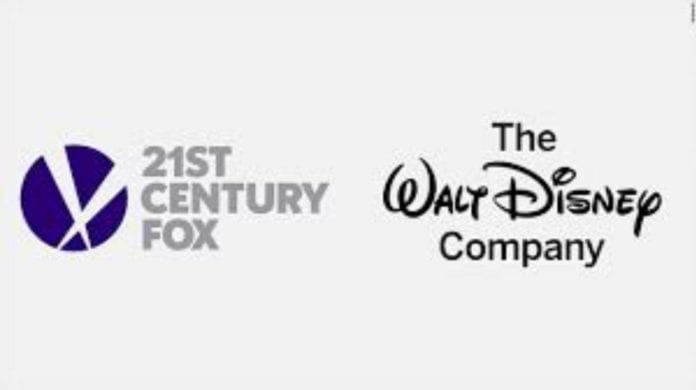It used to be that providing access to content was valuable. Now, the value is in creating original content and making it easy to consume on (primarily) mobile devices. Just look at AT&T buying Time Warner or Disney buying most of Fox as well as Netflix & Amazon creating so much original content. And, we will likely see this trend continue for some time
It’s been simply astonishing to see so many major content acquisitions announced over the past year. Two in particular point to a sea change in the way that people perceive value in the access of content primarily with their mobile devices: AT&T acquiring Time Warner and Disney buying most of Fox. Why are these major acquisitions of content happening now versus many years ago?
If you go back historically over the past 20 years, there have been a number of profound changes in the way content was created and delivered to consumers. Some of the more important changes were:
- Large screens dominated over small screens. TV broadcast was king with very little happening with devices you could hold in your hand.
- Value during these ‘ancient’ times was focused on access. If you didn’t go through the distributor, you couldn’t get access to the desired content. Thus, you paid for access, not the content itself, e.g., you paid your cable bill to gain access to the desired TV show.
- The Internet led to breaking the control over access: anyone could access (not necessarily free) content using a computer and a browser. Thus, control over access was disintermediated by the Internet. You paid for content consumption not access to it.
- Content was perceived (largely) to be free, especially in the age of the Internet. Content suppliers often collected money from advertisers instead of charging the consumer. Yahoo was one of the big early players using this business model.
- More recently, content has been packaged into a service and offered via a subscription. Music is almost entirely consumed this way via such services as Apple Music and Spotify (with iTunes still supplying content on a per-song basis). And video is undoubtedly headed in the same direction with movie and video subscriptions from Hulu, HBO Now, DirecTV Now and others.
- On top of all this, small (mobile) screens now dominate the consumption process. People still watch TV but now with Over the Top (OTT) direct access; it’s easy to access your desired content on whatever device you want at any time you want it.
Now, take a step back and think of these above changes affecting content from two major viewpoints:
- Content Suppliers: you realize that Content is King. Consumers have come to realize that content is where the value lies. If you have a lot of original content, then you’ll find a content distributor may knock on your doorstep soon (if they haven’t already).
- Content Distributors: if you’re primarily a distributor of content, then you realize that you have to own content if you want to own the value in the eyes of the consumer. If you’re Comcast, you buy NBC Universal. If you’re AT&T, you buy Time Warner. If you’re Disney (who owns ABC), you buy most of Fox.
Where do Netflix and Amazon fit into all of this? Netflix started out as a distributor (first by DVD and later via streaming). What did they do? They started to make original content to increase their value proposition to their subscribers. Same for Amazon. Recall that through most of Amazon’s history, they were (and still are) a distributor with easy access to whatever you might want to buy. So, it’s not surprising that Amazon recently announced plans to spend $8 billion for original programming in 2018. They want to make sure that their Prime members (who pay $100 a year or in the equivalent subscription of about $8.33 per month) renew each year to continue to get access to original programming.
And, through all of these changes, mobile has been a contributor to the change. Mobile devices – from Smartphones to Tablets to PCs – are now so powerful that consumers use them 50-100 times a day to read news, track changes in market conditions and access news, weather sports and a host of music and video content.
Strategic insights
As we leave 2017 and look into 2018 and beyond, content is going to continue to be where the value lies. If you have unique content that can provide value to a defined set of customers, then you’ll likely see an increase in the value of your content.
If you’re primarily a distributor of content, then you should be looking to acquiring (or producing) unique content that customers will deem to be valuable.
Content is King! Long live content!
 Dr. Gerry Purdy is Principal Analyst with Mobilocity LLC. He writes a weekly column called the Mobilocity newsletter. He is widely quoted in the press, and has appeared on a number of TV news shows such as MSNBC, Fox Business and CNN regarding mobile and wireless products. Purdy has a Ph.D. from Stanford University, an M.S. From UCLA and a B.S. from the University of Tennessee. Contact: Gerry.Purdy@aotmp.com, mobile 404-855-9494.
Dr. Gerry Purdy is Principal Analyst with Mobilocity LLC. He writes a weekly column called the Mobilocity newsletter. He is widely quoted in the press, and has appeared on a number of TV news shows such as MSNBC, Fox Business and CNN regarding mobile and wireless products. Purdy has a Ph.D. from Stanford University, an M.S. From UCLA and a B.S. from the University of Tennessee. Contact: Gerry.Purdy@aotmp.com, mobile 404-855-9494.

